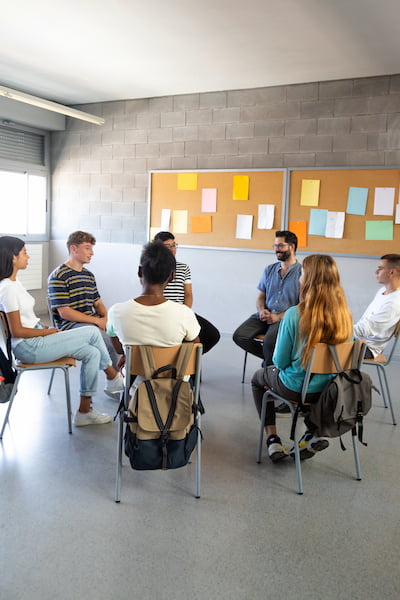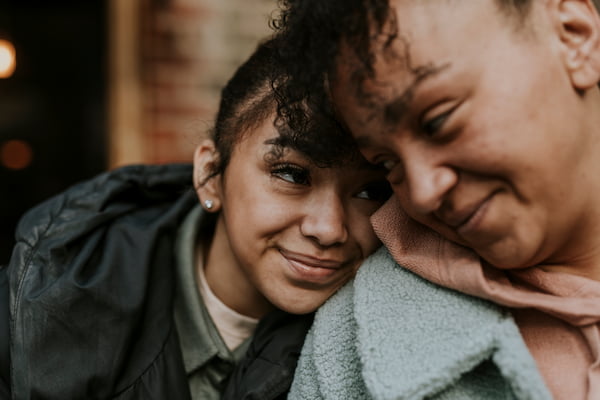Training for Providers
What is Dialectical Behavior Therapy for Adolescents?
Jump to:
- Components of the Model
- What is Dialectical Behavior Therapy for Adolescents (DBT) Video
- Who can benefit from DBT for Adolescents
- How does DBT for Adolescents differ from DBT for adults?
- What role do parents/caregivers play in DBT for Adolescents?
- What does a DBT for Adolescents Learning Collaborative training look like?
- Training Qualifications
- Upcoming Trainings
Overview
Marsha Linehan, Ph.D., developed Dialectical Behavior Therapy (DBT) in 1991, as a treatment for suicidal and self-injurious individuals diagnosed with Borderline Personality Disorder (BPD). Individuals with BPD can be extremely sensitive and reactive to their emotions, which can often lead to actions such as self-injury, angry outbursts, or abruptly ending important relationships. Although these actions temporarily reduce emotional pain, they often cause other problems that can make life more difficult.
Following DBT’s success in treating adults with BPD, Dr. Alec Miller and Dr. Jill Rathus began researching and adapting DBT for Adolescents and their families (1995).
DBT for Adolescents is a structured therapy that helps adolescents learn to manage their emotions, thoughts, and behaviors. It combines cognitive behavioral techniques with mindfulness practices. DBT for Adolescents strategically blends behavior therapy (change) with validation (acceptance). It targets the issues that cause distress and teaches skills to deal with them without having to resort to maladaptive behaviors.
Components of the Model
The Model consists of 4 components:
Assessment and Pre-Treatment
An important initial part of treatment is evaluating the “goodness of fit” between DBT for Adolescents and the adolescent’s problems and treatment goals.
A DBT for Adolescents clinician will assess for the presence of the following 5 problem areas:
- Confusion about Self (including one’s goals and values and how one feels and thinks)
- Impulsive Behavior
- Emotion Dysregulation
- Interpersonal Difficulties
- Adolescent-Family Challenges
Treatment
Weekly Individual Therapy
In weekly individual therapy, the DBT for Adolescent therapist will help the adolescent:
- Identify and maintain focus on the primary problems to be addressed.
- Stay motivated to work hard in treatment and apply new skills in their daily lives.
- Coordinate and consolidate treatment components for the adolescent and family.
Family Therapy
Occurs on an as-needed basis to increase behavioral skill use within the family system, improve communication between family members, and to reduce family interactions that interfere with the adolescents or their family’s quality of life.
Multi-Family Skills Group
Adolescents and their parents/caregivers participate in weekly multi-family skills class. The class typically meets for 2 hours for approximately 6 months and includes multiple adolescents along with their parents/caregivers. Each family learns skills and receives support from each other within a DBT for Adolescents framework. Parents/caregivers also learn to understand and respond to certain adolescent behaviors and to encourage use of the skills.
Multi-Family Skills Group is led by 2 skills trainers who combine lecture, discussion, and practice exercises to teach the following skill modules:
- Core Mindfulness (How to concentrate, focus, and be aware in the moment. How to see oneself and others in a more balanced way.)
- Distress Tolerance (How to get through crises without resorting to harmful behaviors.)
- Emotion Regulation (How to reduce emotional intensity and gain control of intense emotions.)
- Interpersonal Effectiveness (How to better communicate your needs/wants.)
- Walking the Middle Path (How to balance acceptance and change.)
Phone Coaching
Therapists are available by phone outside of scheduled sessions to help adolescents apply DBT for Adolescents skills and manage difficult situations. Phone coaching promotes skills use in everyday life. When adolescents feel “stuck” and unsure what to do, they are encouraged to contact their individual therapist for help in applying their newly learned DBT for Adolescents skills in “real time.” In addition, parents/caregivers are able to contact one of the skills trainers for coaching in how to apply skills with their adolescents.
Consultation Team
All DBT for Adolescents therapists and their supervisor participate in a consultation team. The DBT for Adolescents team meets weekly to assist each other in providing effective, efficient, and compassionate treatment.
The purpose of consultation team is to:
Enhance Clinical Skills: The team provides a forum for therapists to discuss cases, strategies, and techniques, helping them develop and refine their DBT for Adolescents skills.
Maintain Adherence to DBT for Adolescents: By regularly meeting and reviewing their treatment, team members ensure they are following the DBT for Adolescents model.
Support Therapists: DBT for Adolescents work can be emotionally taxing, so the consultation team offers support and guidance to therapists, helping them manage stress and prevent burnout.
Improve Adolescent Outcomes: By ensuring therapists adhere to DBT for Adolescents principles; the team ultimately contributes to better adolescent outcomes.
Consultation team is a core component of DBT for Adolescents, providing ongoing learning, support, and encouragement for therapists, especially when treating adolescents with challenging behaviors.
What is Dialectical Behavior Therapy for Adolescents (DBT) Video
From the UC San Francisco (UCSF) YouTube Channel
Who can benefit from DBT for Adolescents
Adolescents (ages 12-18) with a history of suicide attempts and other emotional and behavioral concerns that may negatively affect their relationships (e.g., conflicts with peers, family, or loved ones). Some of those emotional and behavioral concerns include but are not limited to:
- Recurring suicidal behavior, threats, or self-harm.
- Quick and intense mood changes.
- Harmful impulsivity (spending money, substance misuse, reckless driving, sex, binge eating, etc.).
- Intense and unstable relationships with others.
- Intense anger or difficulty controlling anger.
- Chronic feelings of emptiness.
You may hear the term borderline personality disorder when your clinician is considering DBT for Adolescents treatment. As with any treatment, only a trained clinician should diagnose and determine the appropriateness of DBT for Adolescents or any other mental health intervention.

How does DBT for Adolescents differ from DBT for adults?
The addition of parents/caregivers to skills training sessions is the biggest modification to the DBT for Adolescents treatment approach for adolescents. Better therapy results can be achieved when parents/caregivers are involved, which helps address any difficulties and reinforce treatment outside of sessions.
What role do parents/caregivers play in DBT for Adolescents?
Aside from benefiting from learning the DBT for Adolescents skills themselves, parents/caregivers learn to serve as coaches for their adolescents. Families play an essential role in DBT for Adolescents.
What does a DBT for Adolescents Learning Collaborative training look like?
A DBT for Adolescents Learning Collaborative consists of:
- A 14-month commitment
- 5-day learning session
- Participation in twice monthly consultation calls for 12 months
- Participate in Consultation Team meetings on a weekly basis at their agency
- Fidelity Monitoring through our REDCap data collection system
- Implement and complete the model with at least 2 adolescents and their families during the Learning Collaborative
-
Teams consist of at least 3-4 clinicians and at least 1 clinical supervisor
- Clinical Supervisors currently provide clinical supervision to master’s level therapists
- Clinicians and supervisors must be serving adolescents and their families who are part of the Community Mental Health Services Programs (CMHSP) system
- Clinician(s) and supervisors must be masters level clinicians
Training Qualifications
DBT for Adolescents Learning Collaboratives are provided on a regular basis throughout the year to Community Mental Health Services Programs (CMHSPs) and their provider agencies. To qualify for a Learning Collaborative in our evidence-based DBT for Adolescents program, you must be a licensed clinician employed by either a CMHSP or provider agency and serving adolescents, who are considered SED, and their families.
Please speak with your agency supervisor if you are interested in participating in an upcoming Learning Collaborative.
Upcoming Trainings
Sorry, we don’t have any upcoming trainings. Please check back later for additional updates.

